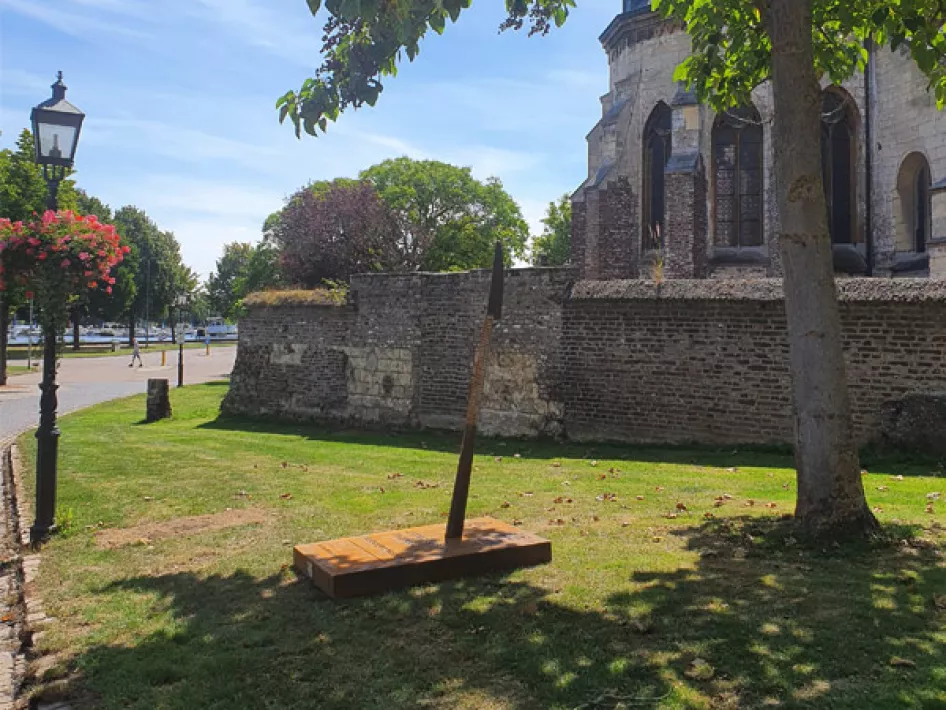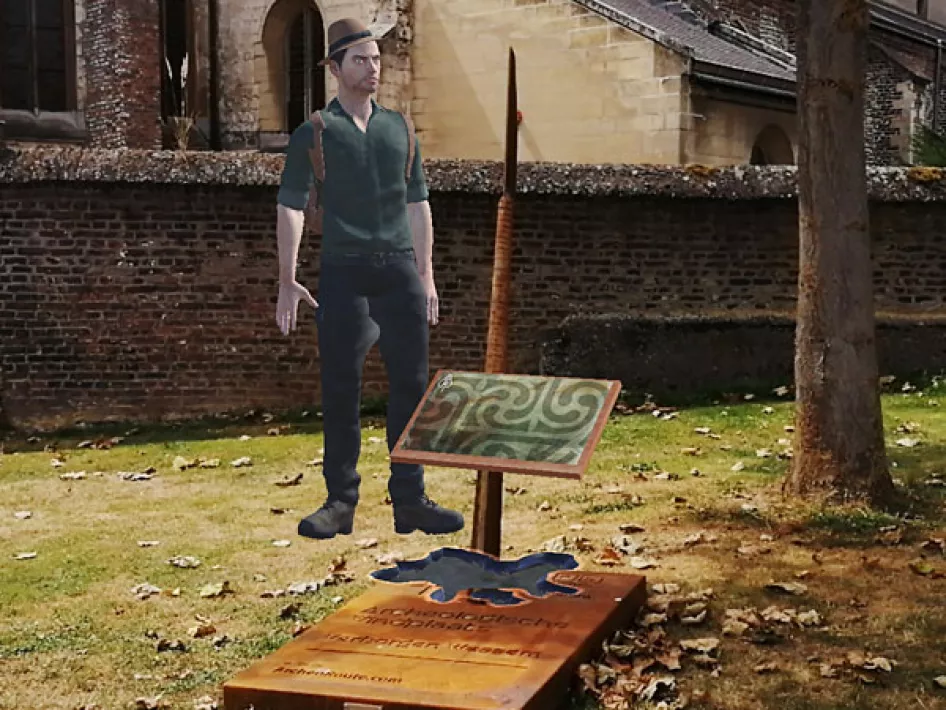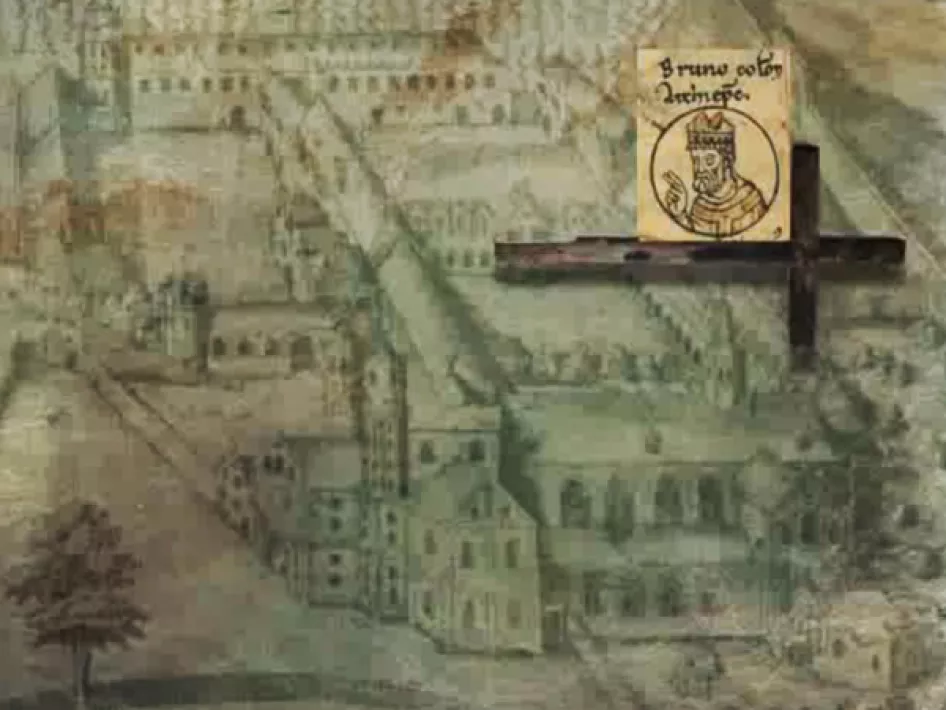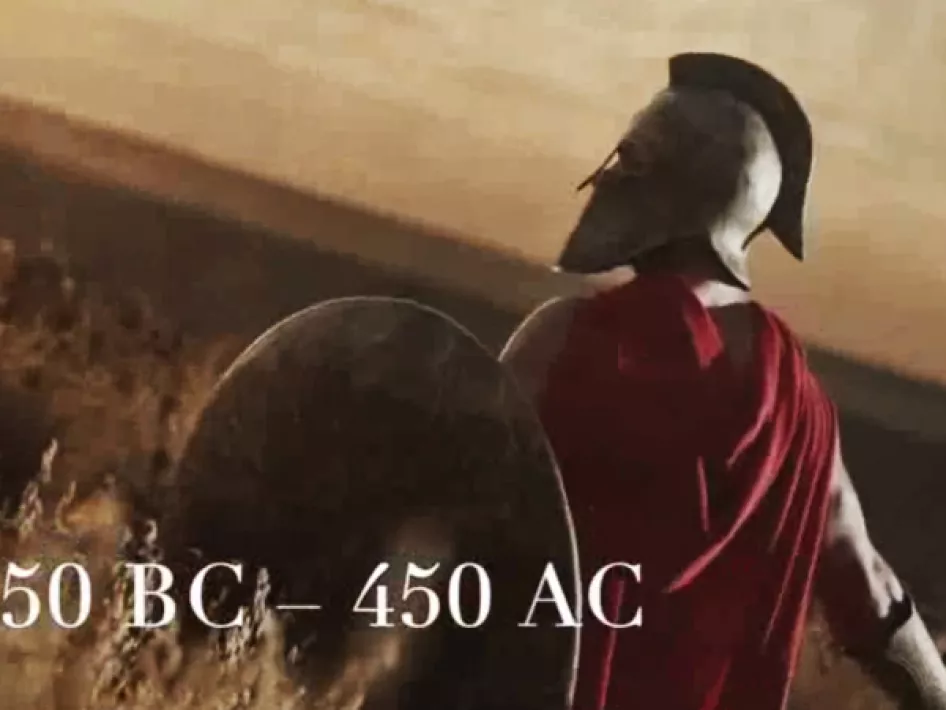In Wessem, you can still clearly tell that the town was an important trading post on the river Meuse with the right to mint coinage and harbour (Portus Wessem) in the Middle Ages. Wessem flourished from the 10th to the 14th century. In 1360, the right to mint coinage was transferred to Weert, which became the most important place in the Land of Horne. Wessem’s port and trade function on the Meuse was taken over by Roermond.
In addition to this visible past, Wessem also has an invisible past dating back to the Late Iron Age! This hidden past has been made visible thanks to various archaeological finds. The finds cover different periods, for example the discovery of a bronze sword dating to the Bronze Age which was found here in the river Meuse.
In 1984, Jos Gielen from Wessem made a spectacular find. Between the Meuse, the Wessem- Nederweert canal and the A2 motorway, he found a bronze bracelet and a Celtic coin among fragments of a pot scattered in a Late Iron Age urn field. An urn field points to habitation.
A beautifully decorated Viking sword from the 9th century was also found, a national top find! Most probably, the Vikings saw Villa Wessem, with its first little church and Roman fortress tower, as they navigated the Meuse to plunder and pillage the shores of the Meuse and the Rhineland. They may have paid an unannounced visit to Wessem and a chief had to leave his sword behind.
Less than a century after the Vikings visited in the year 964, Bruno, the archbishop of Cologne, mentioned Villa Wessem in his will for the monastery of St Pantaleon in Cologne. It is the first time Wessem was recorded in an official document; a will in which valuable assets were documented.
And then there is the remarkable find of a Roman wall relief of the goddess Fortuna from the times that a Roman fortified tower stood here. This find was a fluke, by the way; in 1944 the tower of the St. Medardus church was blown up and the statue reappeared under the ruins. People do not construct churches without a reason; a bricked-in Roman goddess, carved into calcareous sandstone, points towards a long-term presence.
The church plays a central role in the history of the development of Wessem. On this spot, there was a Merovingian church, a Romanesque cross church, a Gothic church, and the present church. Thanks to the vision of architect Frits Peutz, many old elements can be found in the church building. Besides being the house of God, the St. Medardus Church is also an archaeological hotspot in the Meuse valley!
Invisible and undocumented Wessem spans a longer period than Wessem’s visible and documented period. That Wessem was uninterruptedly inhabited from the 2nd century BC onwards is highly likely. You can see more of hidden Wessem in the Limburgs Museum.
Download the app
PLEASE NOTE: The spear is located near Kerkstraat 2, located on the side of the church.
Tourist information
Limburgs Museum
Keulsepoort 5
5911 BX Venlo
www.limburgsmuseum.nl
Opening hours:
Tuesday to Sunday from 11:00 to 17:00 hrs.
Guided tours Medardus church and/or Wessem
reservering@hartvanlimburg.nl





Archaeological site Wessem - Hidden Wessem
Experience the archaeological story of hidden Wessem. Download the app and come face to face with our archaeologist on location. He tells you the hidden history of Wessem through the latest virtual techniques. It is as if you are transforming into the past.
When
Always open.
Contact and location
Archeologische vindplaats Wessem - Verborgen Wessem
Kerkstraat 2
6019 AD
WESSEM
archeoroutelimburg